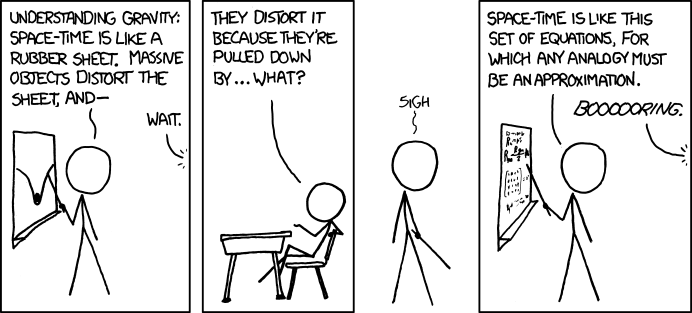Understanding Curved Spacetime
According to general relativity, we live in a four-dimensional curved universe. Since the human mind cannot visualize those four dimensions, a popular analogy compares the universe to a two-dimensional rubber sheet distorted by massive objects.
However, physicists and physics educators criticize the analogy for being inaccurate and for introducing conceptual conflicts. Addressing these criticisms, we analysed the rubber sheet analogy through systematic metaphor analysis of textbooks and research literature, and presented an empirical analysis of upper secondary school students' use and understanding of the analogy.
Taking a theoretical perspective of embodied cognition allowed us to account for the relationship between the experiential and sensory aspects of the metaphor in relation to the abstract nature of spacetime. We employed methods of metaphor and thematic analysis to study written accounts of small groups of 97 students (18-19 years old) who worked with a collaborative online learning environment as part of their regular physics lessons in five classes in Norway. Students generated conceptual metaphors found in the literature as well as novel ones that led to different conceptions of gravity than those held by experts in the field.
Even though most students showed awareness of some limitations of the analogy, we observed a conflict between students’ embodied understanding of gravity and the abstract description of general relativity. This conflict might add to the common perception of general relativity being counter- intuitive. In making explicit strengths and weaknesses of the rubber sheet analogy and learners’ conceptual difficulties, our results offer guidance for teaching relativity. More generally, these findings contribute to the epistemological implications of employing specific scientific metaphors in classrooms.
Find our latest article published in Science and Education. You can also download a pre-print version of the article.
Kersting, M. & Steier, R. Science & Education (2018). https://doi.org/10.1007/s11191-018-9997-4
